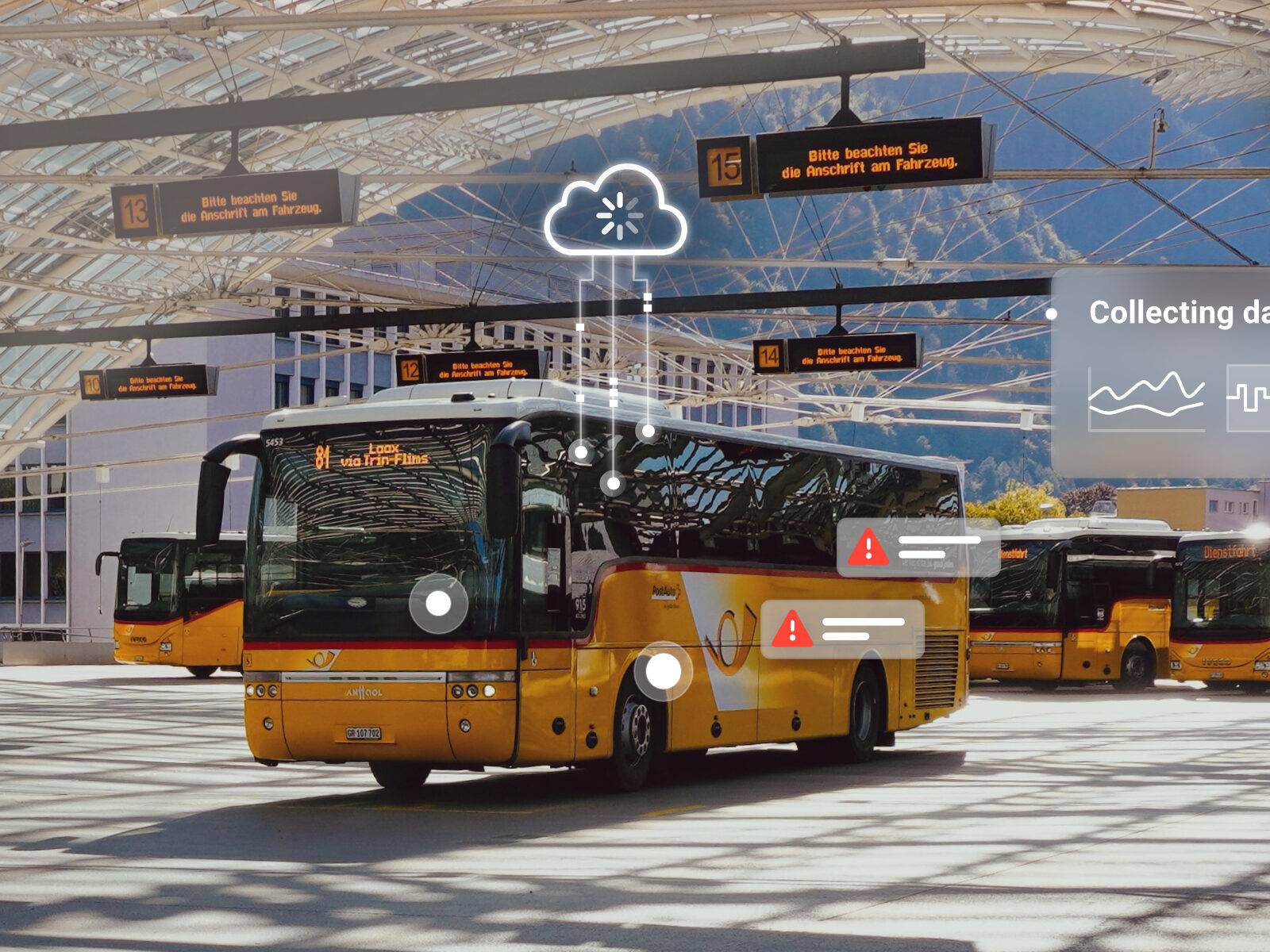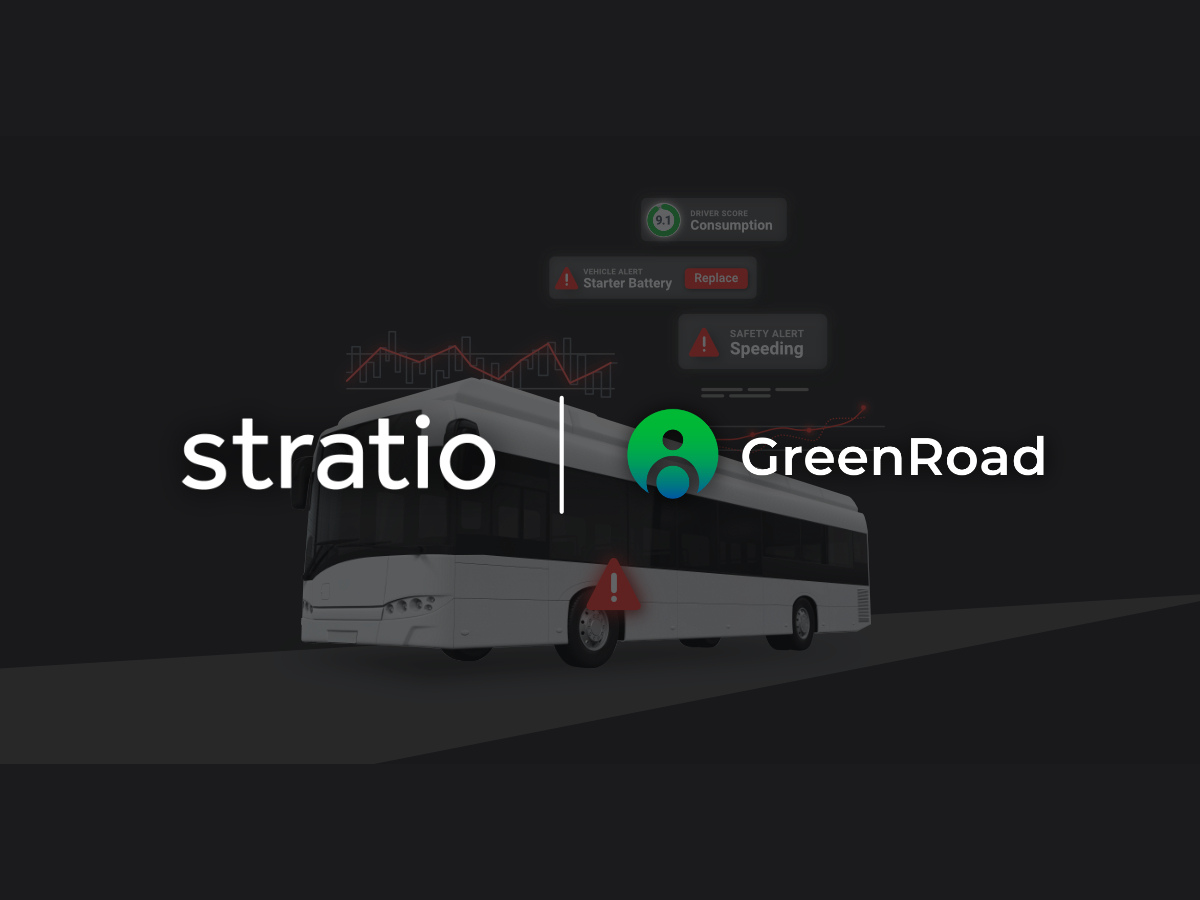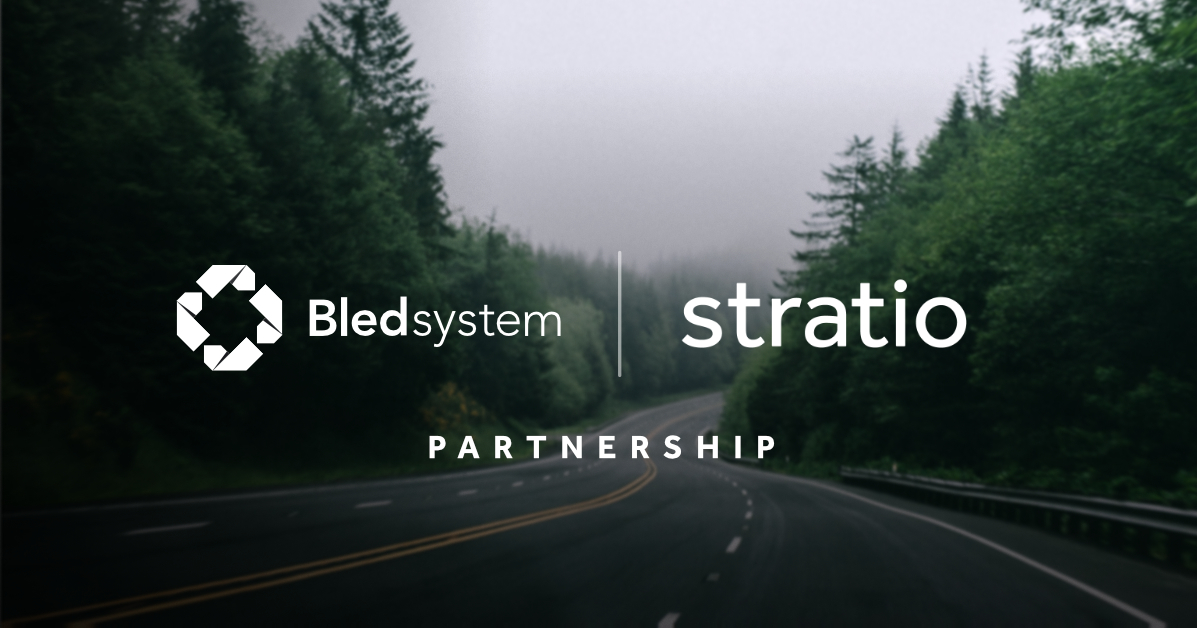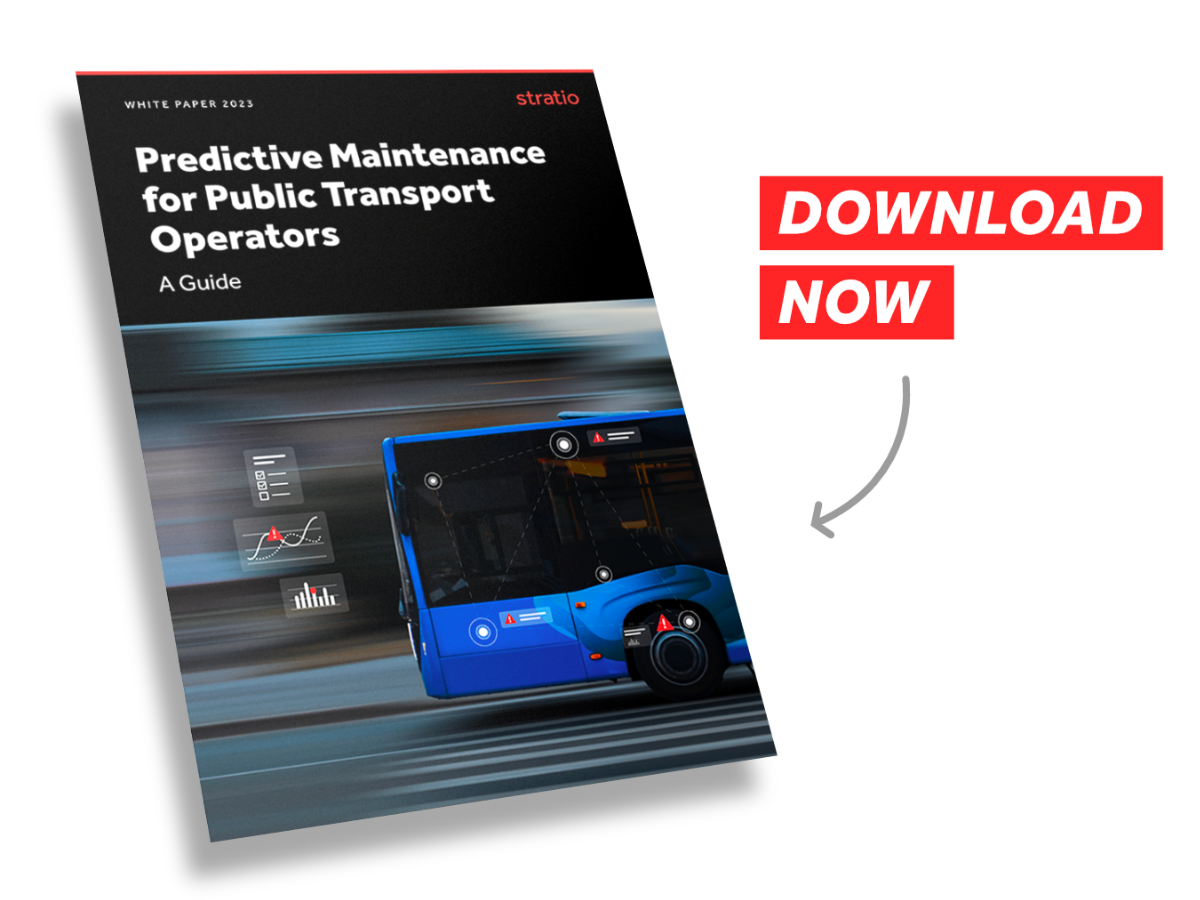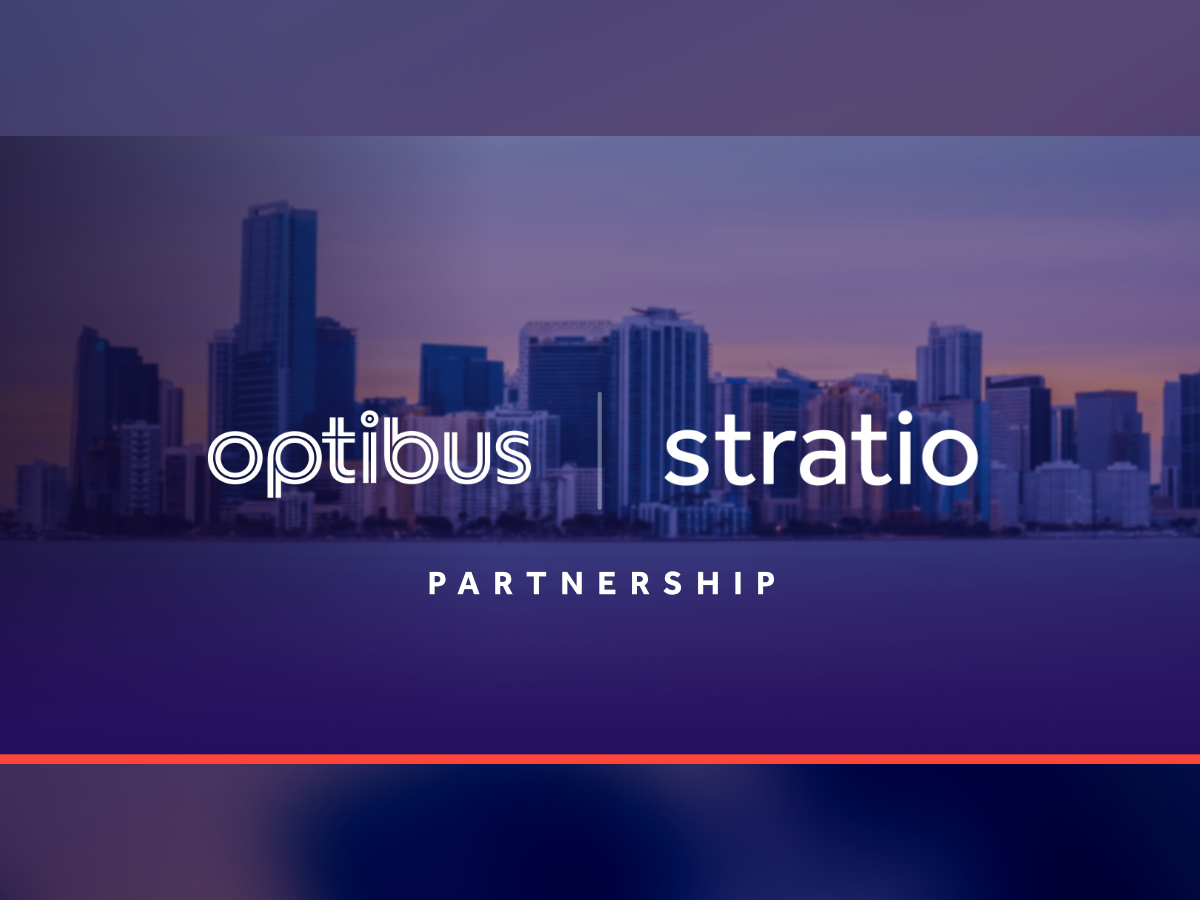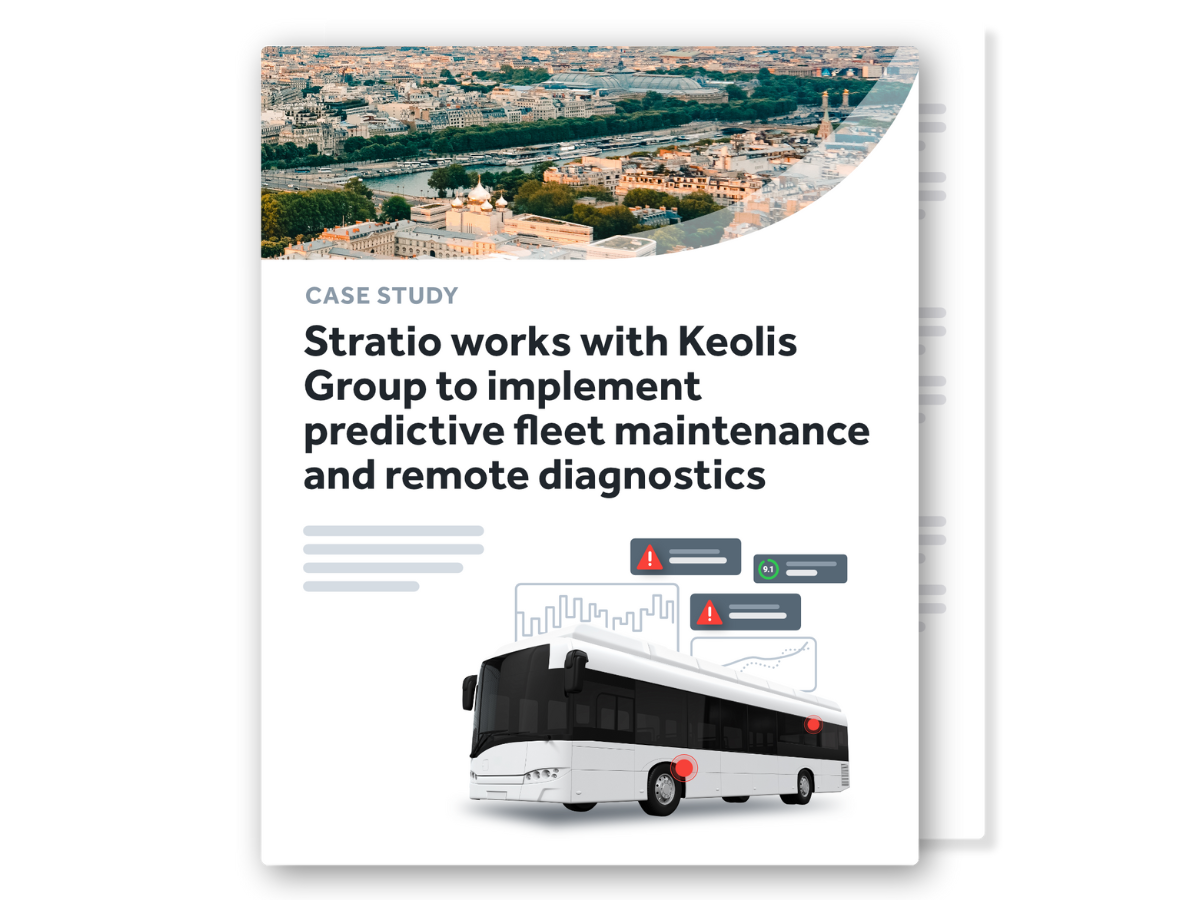Artificial intelligence (AI) is changing the public transport industry as we know it. Unlike other sectors, public transport is subject to government legislation (e.g. net-zero goals), economic pressures such as rising fuel prices, supply chain disruptions, unexpected repairs, and high investments associated with the transition to electric vehicles (EVs).
By utilising AI, automation, and data analytics, operators have registered tangible improvements that led to better passenger service, increased brand reputation, and cost savings. There’s also willingness inside the industry to adopt new solutions – UITP reports that 86% of public transport stakeholders are engaged in partnerships to develop and adopt AI. Some of those applications vary from predictive maintenance to customer analytics and driver behaviour analysis.
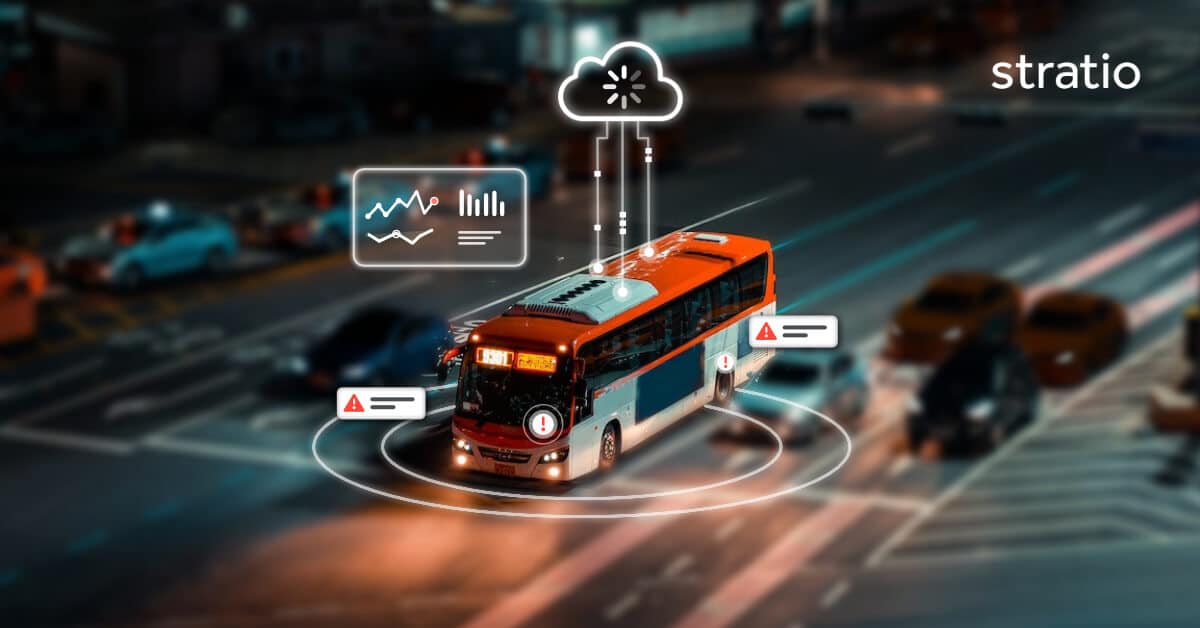
Explore some of the ways AI can support public transport operators in achieving their goals:
1. AI Predictive Maintenance
With its ability to collect and analyse vehicle data to predict component failures before they cause breakdowns, AI predictive maintenance is a solution set to become widespread across public transport fleets over the next few years.
An online survey conducted by UITP, gathering responses from public transport-related organisations, quantified that in the future, 1 in 3 organisations are considering the integration of AI in a set of applications, including predictive maintenance, as seen below.
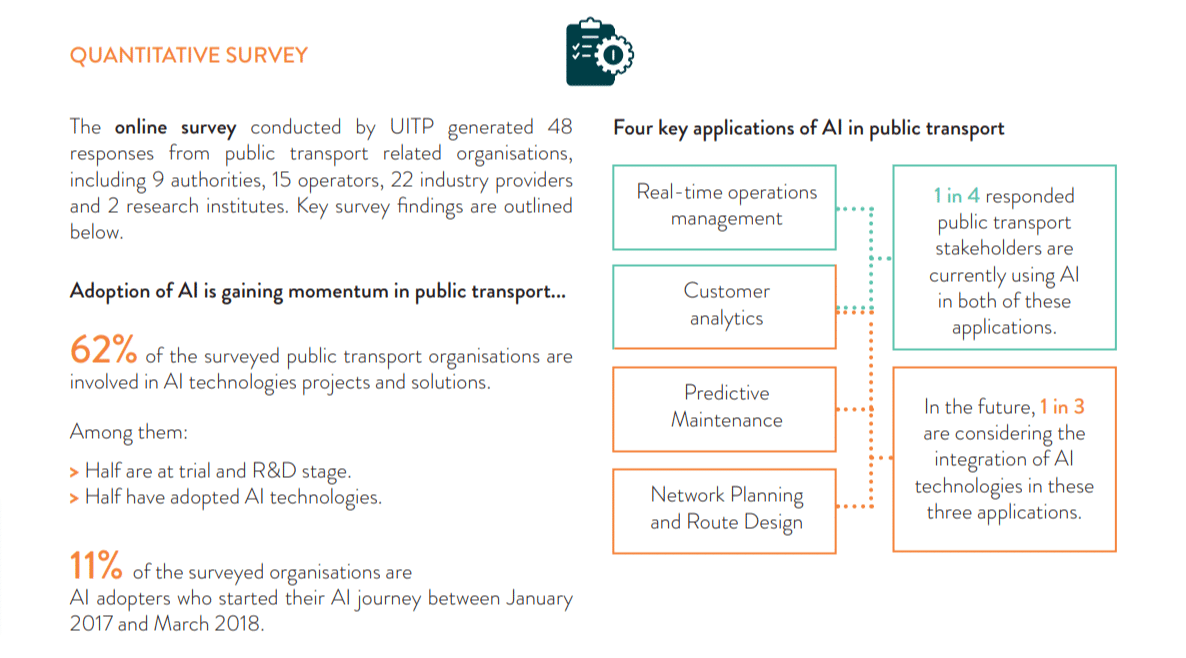
AI predictive maintenance leverages built-in vehicle sensors to collect data and turn it into insights that enable maintenance teams to enhance the reliability of a bus fleet and reduce maintenance and operational costs. With this maintenance approach, buses are less likely to break down while in service, and servicing can be scheduled for off-peak times to minimise service disruptions.
Arriva Czech Republic is one of the transport operators that are already seeing the results of AI predictive maintenance. After leveraging Stratio’s Predictive Maintenance solution, Arriva CZ recorded a 13.5% increase in the mean time between failures, a 66% towing reduction due to fewer vehicle breakdowns, and a total net cost saving of 2% per km per year.
This screenshot of the Stratio Platform shows how operators can keep track of the state of health of their vehicles’ components and systems:
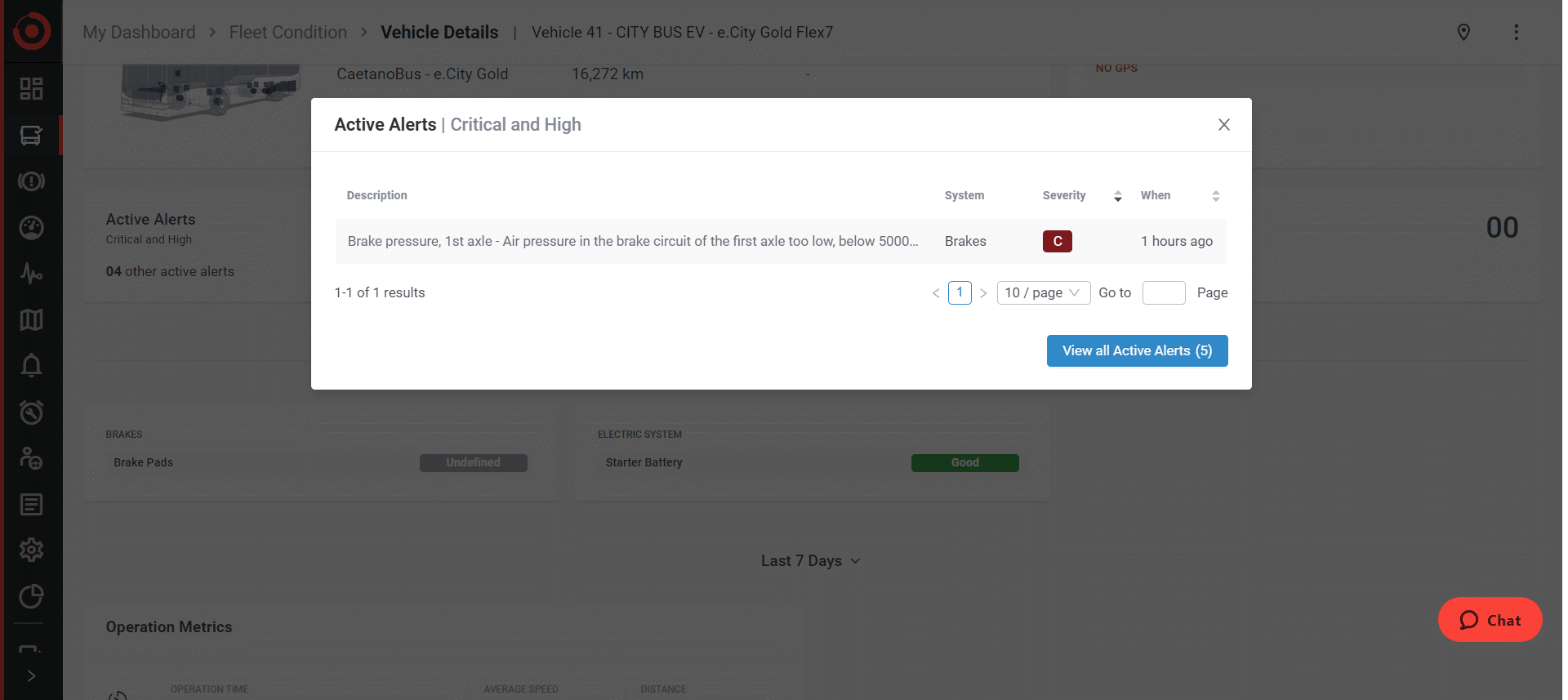
The advantage of using AI for predictive maintenance is that the more data is gathered, the more accurate predictions become, as the algorithms are fine-tuned to recognise a wider range of patterns.
This is particularly critical when it comes to new, expensive technologies, such as electric vehicles. Predictive maintenance insights are key to help operators keep vehicles on the road for longer, serving more passengers, and generating more revenue, thus accelerating the achievement of cost neutrality.
2. Compliance with Service-Level Agreements (SLAs)
AI delivers more than just short-term benefits. For example, by improving maintenance processes to guarantee a reliable service that runs at the lowest cost per mile, it enables transport operators to better meet the demands of their service level agreements (SLAs) with public transport authorities (PTAs), and ultimately win more contracts.
The reduction of lost km due to mechanical failures, in particular, can help operators stay below the threshold set by their SLAs and avoid regulatory fines. Furthermore, by creating an integrated, data-centric ecosystem, operators can leverage the capabilities of maintenance, operations, and workshop management solutions to optimise routes, schedules, and resources, leading to more efficient and cost-effective operations.
3. EV Transition
The importance and necessity of electrifying bus networks is no longer a matter of debate. The big challenge facing public transport operators is now making this transition effectively, and ensuring that the shift doesn’t negatively impact their bottom line.
Monetisation is certainly amongst the highest concerns for operators, since the up-front costs of electric buses are high. This makes it paramount to ensure the lowest cost-per-mile and a positive return on investment.
This is where the real advantages of AI and ML (machine learning) can be maximised – real-time analytics and predictive insights are the upper hand of fleet operators, enabling them to track battery performance, identify optimal charging points, and forecast energy usage in different weather and traffic conditions.
All this can be done in real time as data is fed continuously into the algorithms, supporting the extension of battery life (which accounts for around 40% of the total vehicle cost) while delivering reliable services to customers.
Predictive battery analytics, in particular, provide an accurate, comprehensive view of the battery health evolution of electric buses, allowing for effective route planning and charging requirements, as well as usage optimisation metrics to extend the lifespan of the vehicles.
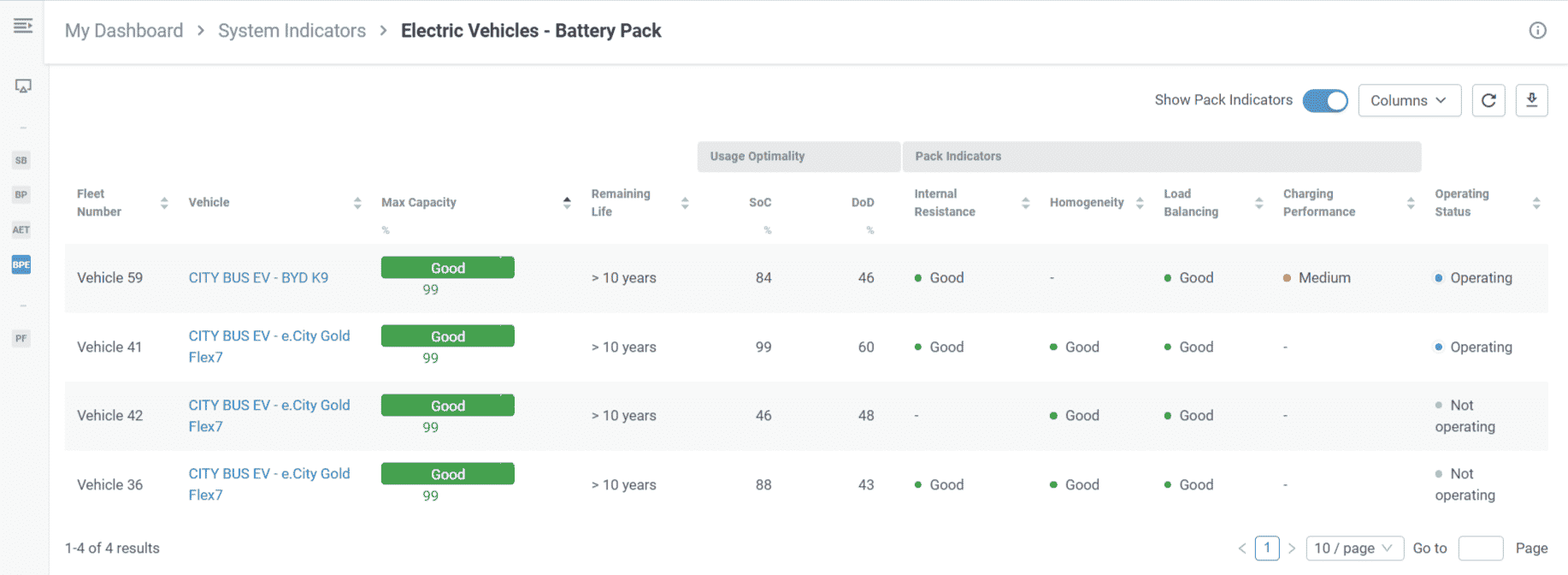
By leveraging state of charge (SoC) and depth of discharge (DoD) data, fleet operators can understand if the operations can be adjusted to maximise battery life, reducing the total cost of ownership of electric buses. This type of analysis is fundamental for an operationally successful and profitable EV fleet deployment.
4. Staff Optimisation
The automation capabilities of AI enable transport operators’ teams to automate manual-intensive, repetitive and time-consuming tasks.
Some of the tasks that can be automated with AI predictive maintenance are odometer readings, coolant checks, and the daily planning of distance-based service tasks (e.g. brake replacements). Relying on technology to perform these tasks means that technicians’ time can be reallocated to other critical tasks.
Odometer readings, for example, can take hours of labour per day if performed manually. With AI predictive maintenance, the values are collected and recorded in real-time, providing maintenance managers with a more accurate, up-to-date view of their assets.
5. Driver Behaviour Analysis
Driver’s behaviour has a critical impact on public transport operations. It influences fuel and energy costs, some of the largest recurring expenses for public transport operators, and affects comfort, a key driver for passenger satisfaction and public transport adoption.
With a driver behaviour analysis powered by AI, technical parameters such as speeding, harsh braking, and idling time are monitored. By using this data, drivers can receive feedback, which can improve fuel efficiency, reduce vehicle wear and tear, and enhance passenger satisfaction.
Additionally, AI uses machine learning algorithms to identify patterns and anomalies in driver behaviour data and can detect, for example, events of harsh acceleration, aggressive braking, speeding, or prolonged idling.
Moreover, AI enables driver scoring by assigning ratings to individuals or groups of drivers based on their behaviour. These scores can be used to objectively evaluate and compare driver performance. High scores may indicate safe and efficient driving, while low scores may suggest areas for improvement.
By identifying and addressing risky behaviours, AI helps transport operators improve safety on the road. This is paramount to give passengers the peace of mind of knowing they are boarding a vehicle that will take them to their destination safely, on time, and without disruptions.
What’s Next?
Keep learning more about the impact of AI in public transportation by accessing our case study with the Keolis Group. It explains how one of the world leaders in shared mobility is using Stratio’s AI Predictive Maintenance solution to keep costs low while increasing operational efficiency.
This article was originally published by Stratio.



